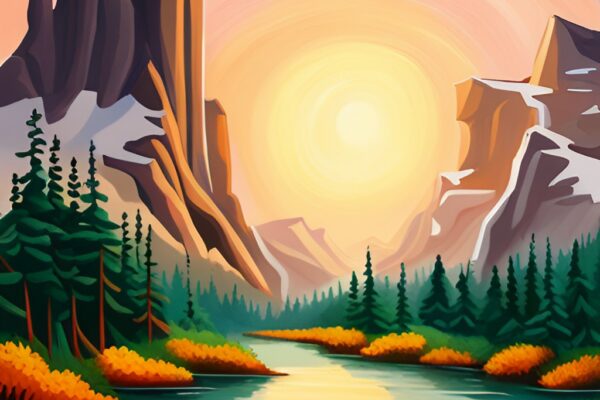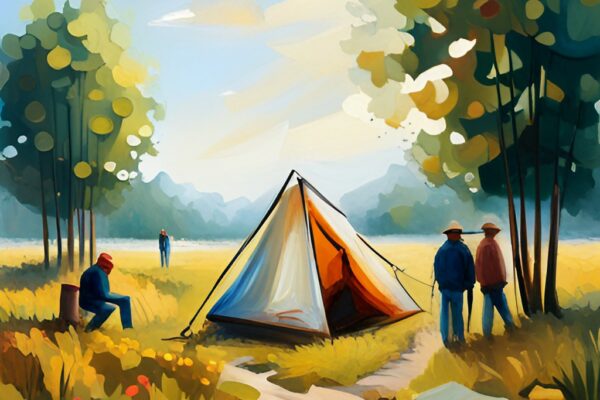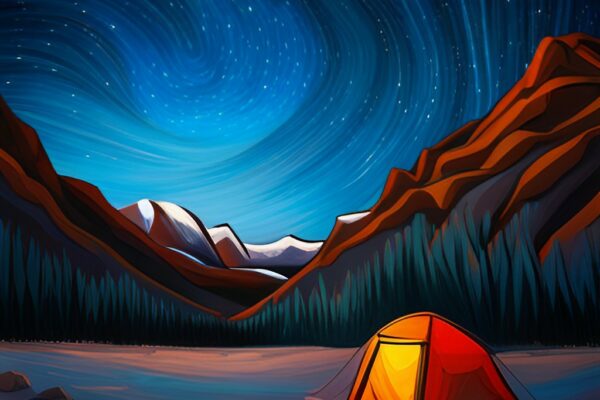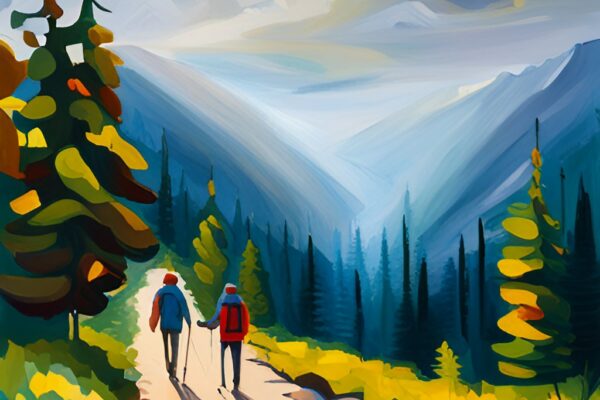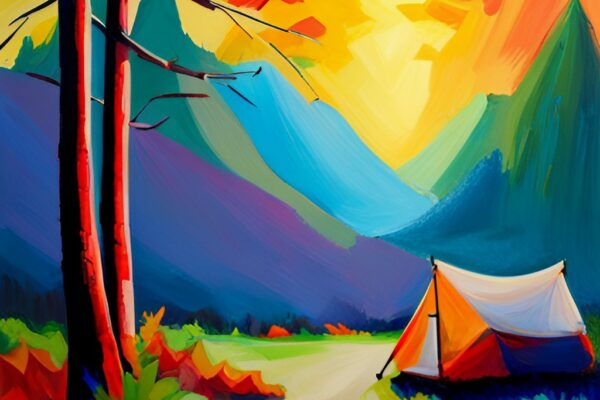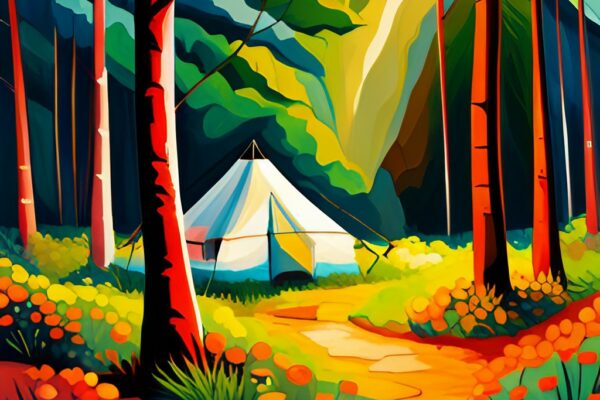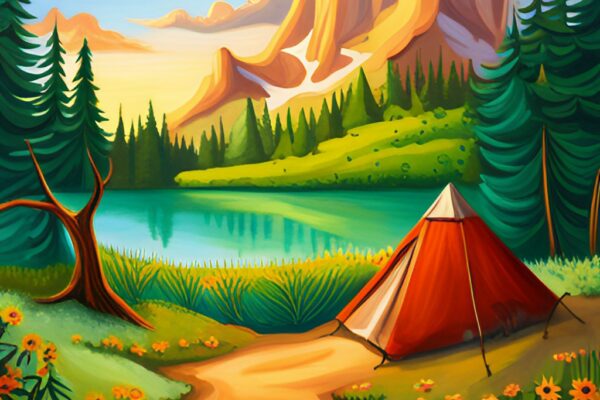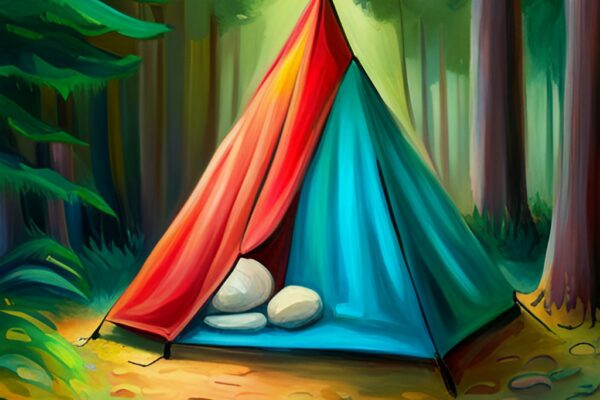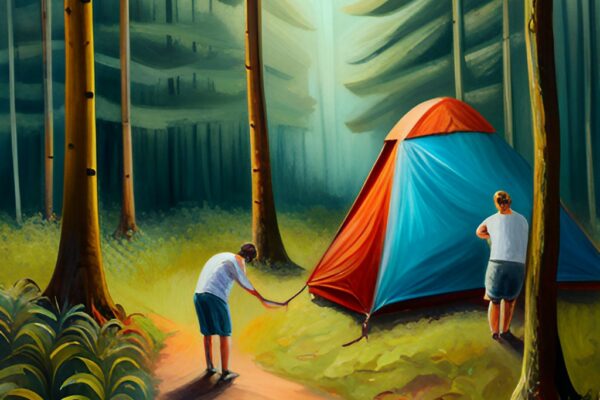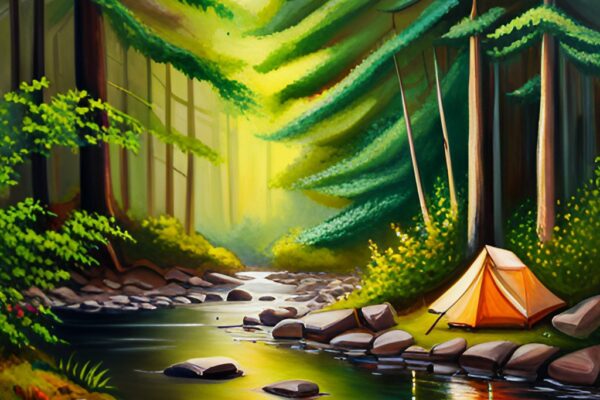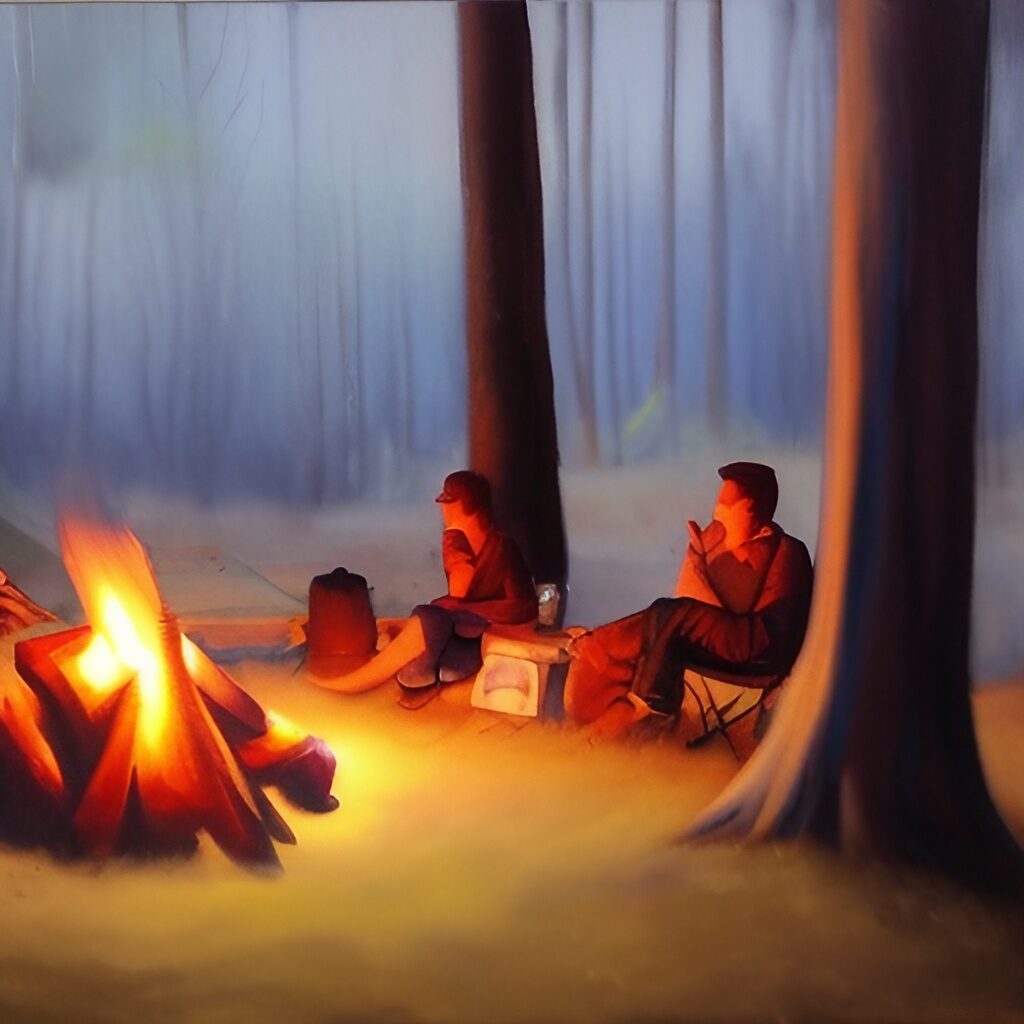
A long-lasting campfire will provide warmth, light, and fun all night long. However, they don’t always last all night.
Half an inch of firewood burns for approximately an hour, but several factors can influence this. The type and quality of wood you’re using are the most influential factors in burn time. Dry, hardwood burns for the longest. Wet, softwood will burn up faster.
There’s a lot of ground to cover on this topic, but I’ve done some research and collected information from seasoned outdoor explorers. Hopefully, this should show you how long a campfire can last.
- How Long Will A Campfire Burn For On Average? – 4 Simple Ways to Make A Long-Lasting Campfire
- What Type of Wood Is Best for A Long-Lasting Campfire? – 4 Simple Ways to Make A Long-Lasting Campfire
- What Type of Campfire Will Last The Longest? – 4 Simple Ways to Make A Long-Lasting Campfire
- How To Make a Campfire Last Longer – 4 Simple Ways to Make A Long-Lasting Campfire
- How Much Firewood Do I Need? – 4 Simple Ways to Make A Long-Lasting Campfire
- How To Start A Campfire With Wet Wood – 4 Simple Ways to Make A Long-Lasting Campfire
- Conclusion – 4 Simple Ways to Make A Long-Lasting Campfire
- Frequently Asked Questions – 4 Simple Ways to Make A Long-Lasting Campfire
How Long Will A Campfire Burn For On Average? – 4 Simple Ways to Make A Long-Lasting Campfire
There’s a common piece of knowledge among seasoned outdoor explorers: half an inch of wood takes around an hour to burn.
Although this isn’t a strict rule, the type of wood, the air’s temperature, the campfire’s construction, and the type of ground the fire is built on all matter. The wind is also a major factor in how long your campfire will last.
Due to these variances, there’s no research or study that shows exactly how long a campfire will burn. Instead, we must rely on experimenting with what works and what doesn’t. And, of course, anecdotes always help.
I got some information from a scoutmaster; he says adding a 4.4″ by 18″ piece of wood can extend an already-burning fire’s burn time by up to an hour. He also suggests gathering five times as much kindling as you think you’ll need.
It’s always better to have more kindling, as being underprepared is always awful, but being over-prepared will set you up for success!
Another seasoned outdoor explorer says two average bags of gas station-bought firewood can fuel a small fire for around 6 hours. He recommends buying five bags, so here’s another example of using more than you need.
Five bags per night is a good idea, even if you don’t use them all. You likely will, though, if two last six hours. You’ll need a third bag to get you through your 8 hours of sleep, and the fourth and fifth bags can fuel your evening’s pre-sleep activities like cooking, telling stories, and more.
What Type of Wood Is Best for A Long-Lasting Campfire? – 4 Simple Ways to Make A Long-Lasting Campfire
Hardwood with low moisture content is the best type of wood for a long-lasting campfire. It burns slowly. Most experienced campfire lovers recommend oak, pine, and hickory woods.
One publicly available school project shows a child conducting a science experiment on how long different woods burn. They used different woods with pieces of the same size, and oak burned the longest.
Oak provides a long-lasting campfire and makes for a very hot one with minimal sparks.
(By the way, if you’ve ever wondered about the temperature of a campfire, all your answers are here as I answer, how hot is a campfire?)
Try to get your hands on the woods mentioned above if you’re camping. Your campgrounds may sell bags of these woods, and many dispensaries and camping-related businesses sell them, too. You can even get small bags of oak on Amazon.
If you’re cutting your own firewood or kindling, hardwood trees have these characteristics:
- Oak: Deep ridges in the bark, very dark wood, deeply lobed leaves with rounded tips
- Pine: Reddish-brown/grey park, needle-like leaves, may grow pinecones
- Hickory: Ridged grey bark, easy to peel the bark, leaves with 5 pointed sections
What Type of Campfire Will Last The Longest? – 4 Simple Ways to Make A Long-Lasting Campfire
A tipi (or teepee) style campfire lasts the longest. Its cone-shaped design lets air circulate, fueling the fire well. The lower part of the wood burns, and the top sections of the firewood then fall to further fuel the flames.
The ample air circulation and self-fueling elements come together to create a fire that will likely last through the night if you top it up a few times.
Learning how to build a campfire is vital when you’re going camping. Here’s how you build a teepee-style one:
- Place dry tinder in your firepit, loosely placed (dried leaves and twigs work well)
- Start creating a conical shape using your smaller pieces of kindling
- Place larger pieces of kindling on top, continuing the cone shape
- Use your firewood to rest against the kindling and further create the cone shape
- Place more firewood crisscrossing on top of the fire as needed
Ensure the wood isn’t compacted, so there’s plenty of room for airflow!
How To Make a Campfire Last Longer – 4 Simple Ways to Make A Long-Lasting Campfire
Using a tipi design and hard, dry firewood will give you the best chance of having your campfire last all night. However, you can do a few more things to make your campfire last even longer.
Use a Soft Surface – How To Make a Campfire Last Longer
While hard, dry firewood is best, a soft surface is surprisingly helpful in making your fire last a long time.
If the surface under your fire is made of peat, or if the forest floor is carpeted with leaves, twigs, and needles, it will last a long, long time.
It can also last longer if you use coal, but that’s not always an option.
Peat fires are so good that they can often last through the harsh Alaskan winters. They’re called zombie fires. The fire will burn deep into the peat, causing snow to fall and melt while the peat beneath the surface continues to burn.
If you start a fire on a peat surface, make sure to saturate the ground with water after putting it out. You need to ensure the peat doesn’t reignite!
Put Ash On It – How To Make a Campfire Last Longer
Adding some ash to your fire will help it last longer. It somewhat smothers the flames, making them need to burn their way through the ash to get to the firewood.
If you put too much ash on your fire, it may go out, as it’ll stop it from using oxygen to stay ignited. But if you collect ash from the previous day’s fire, feel free to put some ash on your new fire a little at a time.
Put Rocks In It – How To Make a Campfire Last Longer
Adding a few rocks to the tinder when starting your fire is a good idea. The rocks will hold heat and help your fire last a little longer than without them.
Use a Self-Feeding System – How To Make a Campfire Last Longer
A self-feeding fire system will keep your fire burning even if you forget to fuel it. A tipi-style fire works well for this, but you can create a self-feeding system in other ways.
If you have a lot of room and time, you could create two ramps on either side of your fire, with the fire being the lowest area between the ramps.
Load the ramps with logs, and when one burns to ash, the next will roll into the flames until all the logs are burned.
This works best on multi-night stays at a large campsite.
How Much Firewood Do I Need? – 4 Simple Ways to Make A Long-Lasting Campfire
On average, you’ll need around 2–5 bundles of firewood daily to fuel your fire. The more firewood you gather or purchase, the better. You’ll need even more if you want your campfire to last all night. Anecdotally, 20 kg of firewood should last 1–3 days.
It’s a good idea to experiment with how much firewood you need. You may need less if you live in a very dry climate because your wood will be extremely dry. If you live in a humid area, you’ll need more wood. It’s very difficult for wet wood to burn.
And, once again, the type of wood you use matters, too. If you can only find softwood firewood, you should get a few extra bags—perhaps consider seven instead of five or four instead of two.
Out of those bags, you’ll need around 4 logs to refuel your fire per hour, with the placement spread evenly throughout the hour for the best results. This will work for general purposes, like staying warm and seeing the surrounding area.
If you wish to cook on your campfire, you’ll need to refuel it more often, using 6–10 logs per hour.
How To Start A Campfire With Wet Wood – 4 Simple Ways to Make A Long-Lasting Campfire
- Scrape away any moist or saturated bark
- Use extra kindling and tinder; gather as many dry leaves and twigs as you can
- Keep your fire off the wet ground using lots of rocks
- Build and light your fire as usual
- Lay the rest of your firewood near the fire to help it dry out
- Refuel more often, working from small to large logs
When starting a fire, working with wet wood is more difficult, but it’s not impossible. Just remember to have more wood on hand and do everything you can to get the wood as dry as possible before you use it as fuel.
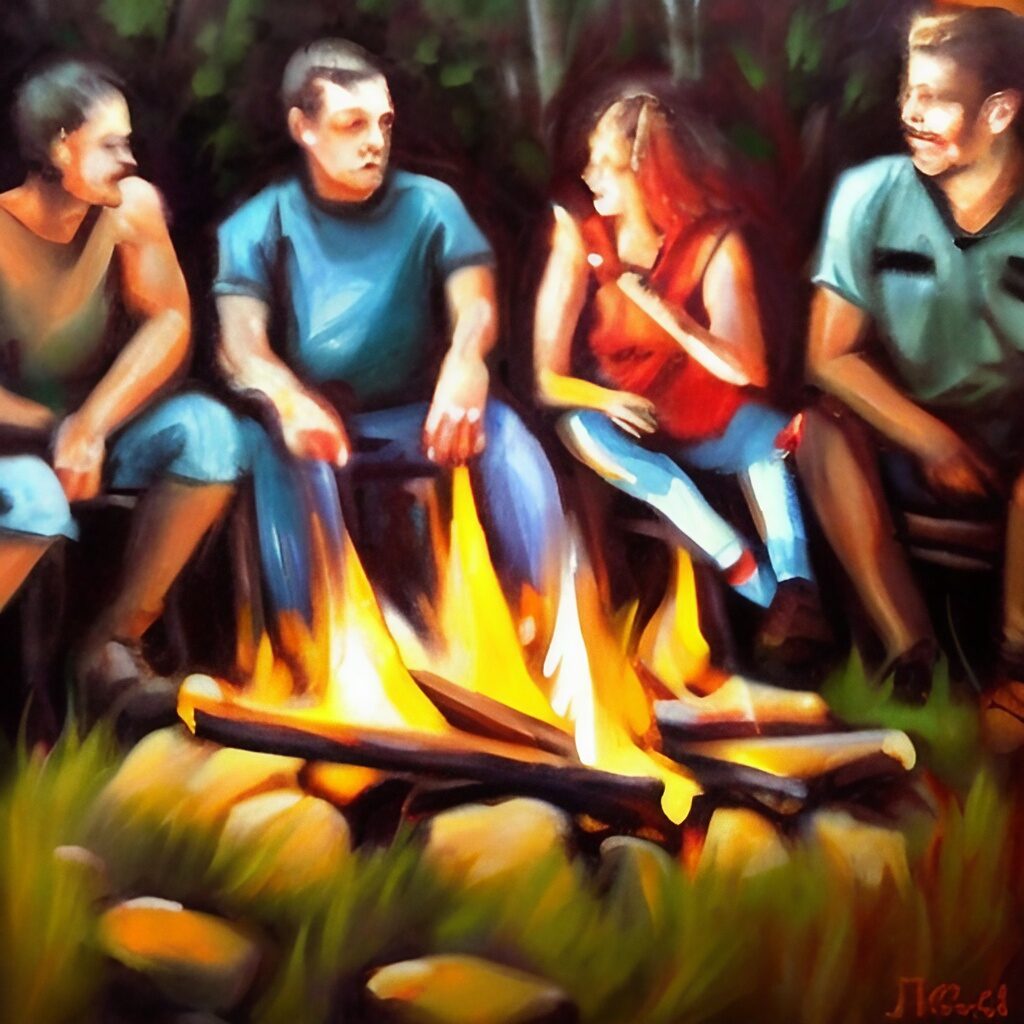
Conclusion – 4 Simple Ways to Make A Long-Lasting Campfire
You can use numerous tips and tricks to keep your fire burning longer. The key is to use the right kind of wood, have a system that feeds itself, and have enough firewood. Remember the half-inch rule!
And remember to stay safe around the campfire! Here are some campfire-related camping safety tips you may wish to check out.
Frequently Asked Questions – 4 Simple Ways to Make A Long-Lasting Campfire
Why is it Important to Use Firewood that is Local to a Campfire? – FAQs
When camping, there are several reasons why it’s important to use local firewood.
The containment of invasive species is an important consideration. Moving firewood long distances poses risks to local tree health and ecosystems due to the spread of invasive pests and diseases. Firewood sourced locally helps prevent the spread of invasive species and preserves natural areas.
In order to help the environment, it’s a good idea to use firewood that’s already in the area when camping. In order to cut down on carbon emissions and encourage sustainable practices, using firewood sourced locally is highly recommended. In places where deforestation is a problem or where resources are scarce, this may be especially significant.
Moreover, in order to prevent the spread of invasive species and to protect local ecosystems, many parks and campsites have regulations in place that require visitors to use only locally sourced firewood. You’ll be doing your part to protect the environment and your wallet at the same time as you obey these rules.
Buying firewood from a nearby business is a great way to support the community and stimulate the economy. Buying firewood from a neighborhood vendor is a great way to support mom-and-pop shops and keep money in the neighborhood.
In conclusion, it is more eco-friendly, sustainable, and responsible to use firewood sourced from nearby locations when camping, which benefits both natural habitats and local economies. If you’re going camping soon, don’t bother bringing your own firewood — instead, seek out nearby sources!
How Do I Put Out a Campfire? – FAQs
Preventing wildfires and protecting natural resources both require knowing how to properly extinguish a campfire.
Methods are as follows:
- In order to get the most heat out of the fire, you should let the wood burn until it is reduced to ash.
- Use a bucket or other container to pour water on the fire until it is completely out.
- To ensure that the embers and ashes are completely saturated, stir them with a shovel or a stick.
- Fill the fire pit with more water and check for any remaining hot spots to extinguish.
- Feel around the fire pit’s perimeter and other nearby areas where sparks might have landed to see if any heat remains. In the event that you feel any sort of heat, you should pour additional water over the affected area until it feels cool.
- Once you’ve made sure the fire pit is cool and damp, you can cover it with dirt or sand to extinguish any embers that may have remained.
- Finally, before leaving, make sure there is no smoke or heat visible anywhere.
Keep in mind that a campfire should never be left unattended. Prior to leaving the site, make sure the fire has been completely extinguished.



